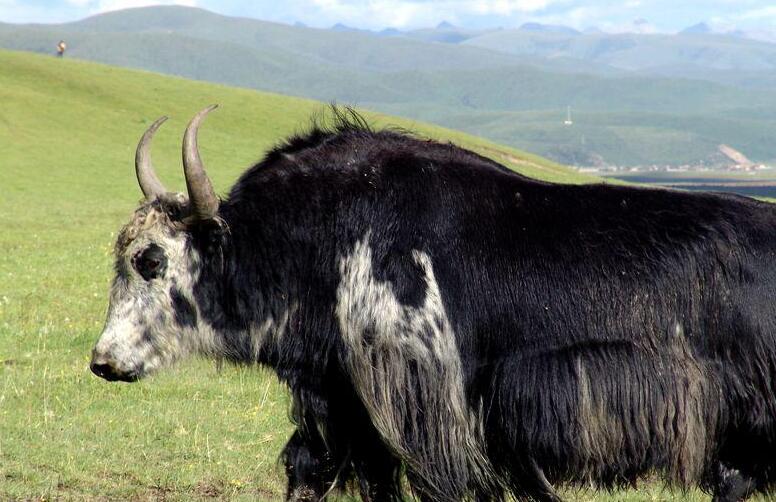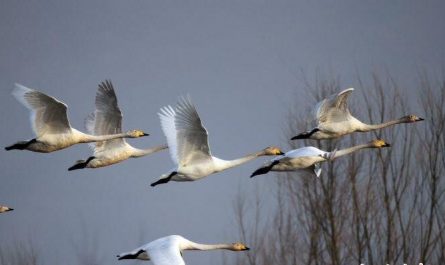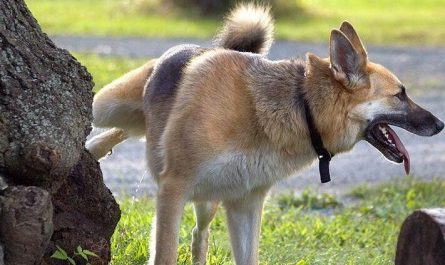The reason why the yak can survive on the plateau
Yak, also known as Tibetan cattle, is of the same species as scalpers and is a special livestock of the Tibetan people in my country’s high mountain grasslands. Mainly produced in Tibet, Qinghai, Xinjiang, Sichuan and other provinces (regions) 3,000-5 kilometers above sea level alpine grassland.
The plateau pastures have a cold climate with an average annual temperature of about 0℃. The plant growth period is only 120 days, and there is no absolute frost-free period. Although the sun is strong here, it disappears quickly. Therefore, the higher the altitude, the lower the temperature. The climate here is extremely variable and the air is thin. The mist was full for an instant, no one was seen within a few meters, and suddenly snow fluttered and the mountains were dressed in silver. Yak is not afraid of cold, it loves cold and fears heat, and is most suitable for this kind of severe cold environment. The yak can spend the night in the open air at minus 30 degrees Celsius. A thick layer of frost has accumulated on its back in the morning, but it is still calm and without chill. The hoof of the cattle is big and solid, and the body is strong and can endure hunger. It is not only an excellent livestock, but also can carry heavy objects and act as a mount. One yak can carry 100 kilograms of heavy objects, climb mountains and ridges, walk on ice, lie on the snow, and sleep in the wind. It can run continuously for more than 20 days, so it is known as the “boat on the plateau”.
Why can the yak survive in the severe cold environment of the plateau? Zoologists have found that when the yak enters the plateau for 8 months in the cold season, the thick hair of the yak grows out among the thick hairs. Its coat is composed of different types of fibers, has a well-insulated air layer, and the developed yak skin underneath the tissue is easy to accumulate fat, which can protect the body from freezing damage. In addition, the yak has fewer folds and sweat glands, which can reduce heat loss. Under cold conditions where the temperature is far lower than the yak’s body temperature of 37—38℃, it is beneficial to preserve body heat, reduce the consumption of body heat or nutrients, and maintain normal body temperature and physiological functions. At an altitude of 3,000 meters, the oxygen content of the air is reduced by one-third; at an altitude of 5,000 meters, the oxygen content of the air is reduced by one-half. The mystery that yak can adapt to the high altitude hypoxia environment is: the yak has a large chest cavity, short and thick trachea, similar to the trachea of a dog, and can adapt to frequent breathing. The heart and lungs of the yak are developed, and the alveoli are larger than those of ordinary cattle. The blood contains red blood cells with more heme. These physiological characteristics enable the yak to increase the oxygen capacity in the blood and obtain necessary or more oxygen. Therefore, the yak can adapt to the low air pressure, thin air, low oxygen content, and survive in the high mountain and cold environment almost all year round. .
Life habits of yak
The yak has a compact body, short neck and small ears, and small skin thickness and small surface area. The sweat gland function is extremely underdeveloped. The length and fineness of the coat vary with the season. The side and lower skirts are dense and long, which can keep out the cold and moisture. , Suitable for cold weather. Large chest, well-developed heart chest, short trachea, large red blood cells, high hemoglobin content, fast breathing and pulse, adapt to high altitude hypoxia environment. The mouth is wide, the lips are flexible, and it can eat short grass; the hoof is firm and soft, and the temperament is docile, and the response is sensitive. The established conditioned reflex is relatively solid and easy to adjust; strong disease resistance, strong resistance to adversity, strong gregariousness, Wide feeding habits, tolerance to hunger and thirst, tolerance to extensive feeding and management conditions.
The yak can adapt to an ecological environment with an altitude of 3,200-4,800 meters, an atmospheric pressure of 68420.85~55,435.28Pa, an oxygen partial pressure of 14505.43~11679.01Pa, and an oxygen content of 14.9%~11.44%. It has a well-developed thorax and a large heart and lung development index, which protects the chest, abdomen, internal organs, external reproductive organs, breasts and joints to prevent freezing. According to the measurement, the daily grazing on the meadow grassland at an altitude of 3800 meters is 9.5h, and the yaks eat 27.86±1.42kg of fresh grass every day.
The yak also has the ability to know the way. It is good at walking on steep and dangerous roads, snow-capped swamps, can swim across rivers and torrents, and can avoid traps and choose paths. It can be a guide for tourists.
The habitat of the yak
Wild yak inhabits plateau meadows, shrubs, deserts and other places at an altitude of 4000 to 5000 meters. It is adaptable, resistant to wind and snow and severe cold, has a more sensitive sense of smell, is more active in groups, and likes to forage in the morning and dusk. Generally, the end of the year to the beginning of the next year is estrus and mating. The pregnancy period is about 9 months.
The wild yak was originally a specialty animal in the Qinghai-Tibet Plateau of my country. It is a typical alpine animal and is extremely cold-resistant. Distributed in southern Xinjiang, Qinghai, Tibet, northwestern Gansu and western Sichuan. Inhabits alpine meadows with an altitude of 3000-6000 meters, in various environments such as inaccessible high mountains, mountain basins, alpine grasslands, alpine desert grasslands, etc. In summer, it can even reach 5000-6000 meters above sea level and move under the snow line. edge. Wild yak has the ability to tolerate bitterness, cold, hunger, and thirst, and has a strong adaptability to the environmental conditions of alpine grasslands. Therefore, many wild ungulates and domestic animals are difficult to use and reach shrubs, forests and alpine pastures, but it can Get on board for use.
Wild yaks live in different places throughout the year. They gather in the lakeside plain in winter and mate and breed near the snow line of the plateau in summer and autumn. The wild yak has a fierce temperament, and people generally don’t dare to touch it easily. If it is offended, it will rush up with 10 times the strength of its oxen, and sometimes crash the car. Chinese yaks account for 90% of the world’s total, and most of them grow on the Tibetan Plateau.






